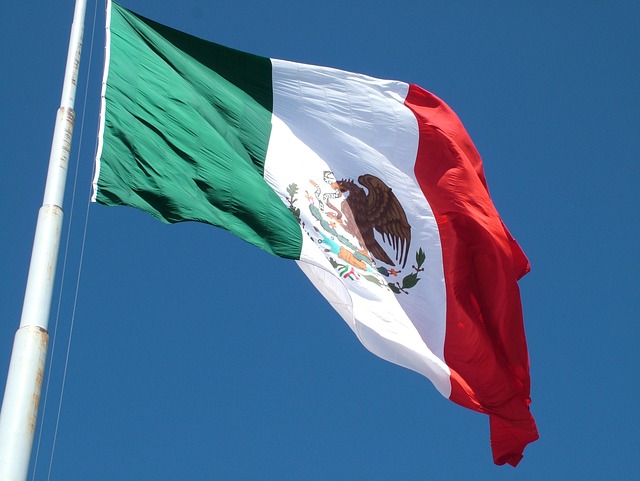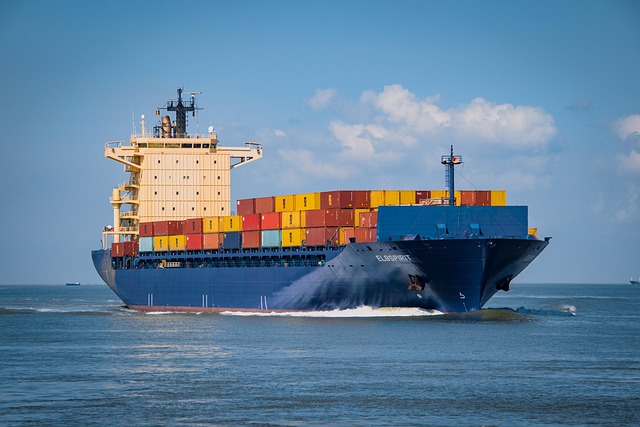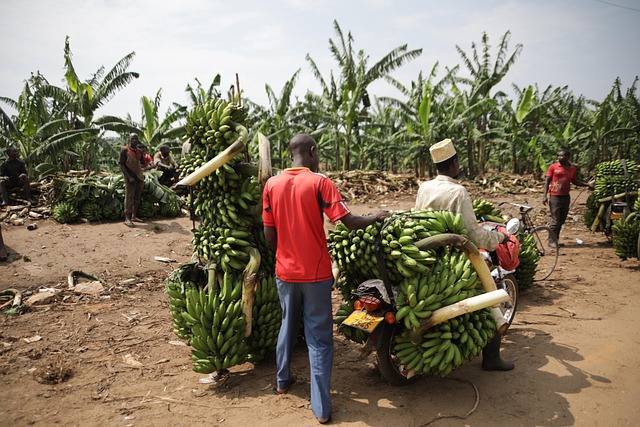What Does Mexico Trade: Goods, Partners, Trends
Author: Jameson Richman Expert
Published On: 2025-11-04
Prepared by Jameson Richman and our team of experts with over a decade of experience in cryptocurrency and digital asset analysis. Learn more about us.
What does Mexico trade is a question that gets to the heart of the country’s role in global commerce. This article summarizes Mexico’s major exported and imported goods and services, primary trade partners, trade policy and infrastructure, emerging trends (nearshoring, electrification, and digital trade), and practical steps for businesses or individuals looking to engage with Mexico’s markets. You'll find data sources, actionable guidance, and recommended resources to research and start trading with or within Mexico.

Quick overview: Mexico’s trade profile
Mexico is a highly trade-dependent economy with a diversified export base anchored in manufacturing. Its geographic proximity to the United States and membership in major trade agreements (notably the USMCA) position Mexico as a crucial link in North American and global supply chains. Exports range from automobiles and electronics to agricultural products and petroleum, while imports include machinery, electronic components, fuels, and consumer goods.
For official trade statistics and detailed commodity breakdowns, consult sources like the Instituto Nacional de Estadística y Geografía (INEGI) and international databases such as UN Comtrade and the World Bank country profile.
Major export categories
Mexico’s exports reflect its strengths in manufacturing and agribusiness, plus natural resources. Key export categories include:
- Automotive and auto parts: Vehicles and auto components are Mexico’s largest manufactured exports. Mexico hosts assembly plants and regional supply chains for brands like General Motors, Volkswagen, Ford, Nissan, and increasingly electric vehicle parts suppliers.
- Electronics and electrical machinery: Computers, smartphones, semiconductors, televisions, and related components (PCBs, cables, connectors) are major exports, driven by maquiladora manufacturing and foreign direct investment from Asia and the U.S.
- Machinery and appliances: Industrial machinery, HVAC systems, and household appliances are important export items.
- Petroleum and petroleum products: Crude oil and refined products have historically been major exports, though production trends and domestic refining policies affect volumes and values year-to-year.
- Agricultural and food products: Mexico exports avocados, tomatoes, berries, citrus, coffee, beer, tequila, and processed foods to the U.S., Canada, and other markets.
- Metals and minerals: Mexico is a major silver producer and also exports gold, copper, and other mineral products.
- Medical equipment and pharmaceuticals: Production for domestic use and export has increased, especially after increased investment during and after the COVID-19 pandemic.
Example: Automotive as the backbone
The automotive sector’s share of total exports is large because Mexico combines low-cost manufacturing with modern assembly plants and close access to the U.S. market. The presence of tier-one suppliers for chassis, transmissions and electronics amplifies value-added within Mexico.
Major import categories
Mexico imports raw materials, capital goods, and consumer products needed for its manufacturing base and domestic consumption. Principal imports include:
- Machinery and mechanical appliances (including industrial equipment and manufacturing tools)
- Electronic components (semiconductors, integrated circuits, transceivers)
- Vehicles and vehicle parts (components for assembly and finished vehicles)
- Mineral fuels and petroleum products (Mexico both exports and imports various refined products depending on refining capacity)
- Chemicals and plastics used by industry
- Consumer goods (textiles, packaged foods, electronics for retail)

Top trade partners
Mexico’s trade is heavily concentrated with several countries:
- United States: The U.S. is by far Mexico’s largest trading partner. Most Mexican exports (manufactured goods, agricultural produce, energy) are destined for the U.S., while the U.S. supplies components, machinery, and consumer products. The United States–Mexico–Canada Agreement (USMCA) governs much of this trade.
- China: China is a major source of imports (especially intermediate goods and electronics) and a growing export market.
- Canada and European Union: Canada is an important partner through USMCA; the European Union receives Mexican agricultural and manufactured exports. Mexico also participates in the Comprehensive and Progressive Agreement for Trans-Pacific Partnership (CPTPP), expanding links with Asia-Pacific economies.
- Latin America: Mexico exports manufactured goods and imports raw materials and food products within the region.
For treaty details and the effect on trade flows, read the official USMCA information at the Office of the United States Trade Representative: USMCA overview.
Trade policy, agreements, and tariffs
Mexico has an extensive network of free trade agreements (FTAs) connecting it to more than 40 countries. These FTAs reduce tariffs, simplify customs procedures for eligible goods, and attract foreign investment. Highlights:
- USMCA: Replaced NAFTA and modernized rules of origin, with specific provisions for automobiles, labor, digital trade, and dispute settlement.
- CPTPP: Opens Asia-Pacific markets to Mexican exporters.
- EU Economic Agreement: Mexico and the European Union modernized their trade agreement to improve access for industrial and agricultural goods.
Mexico’s Secretaría de Economía provides details on trade policy and bilateral agreements; see the Mexican government site for official documents: Secretaría de Economía.
Infrastructure and logistics
Mexico’s ports, railways, and highways support its export-oriented economy. Major seaports include Manzanillo (Pacific), Lázaro Cárdenas (Pacific), Veracruz (Gulf), Altamira (Gulf), and the Port of Ensenada. Inland logistics hubs like Monterrey and Guadalajara are key industrial centers. Rail and cross-border trucking are essential for U.S.-Mexico supply chains.
Customs procedures are managed by the Administración General de Aduanas. Businesses should be familiar with the Mexican import tariff schedule (TIGIE) and electronic customs systems.

Role of maquiladoras and manufacturing clusters
Maquiladoras (IMMEX program factories) assemble foreign-sourced inputs for export with preferential customs treatments. These export processing zones have created dense manufacturing clusters for automotive, electronics, aerospace, and medical device industries—particularly in northern border states and central hubs like Querétaro and Baja California.
Agricultural exports: more than avocados
While avocados and tequila are high-profile exports, Mexico’s agricultural export basket is broad:
- Avocados, tomatoes, berries, mangoes and citrus
- Grains and oilseeds (corn, sorghum)
- Processed foods, beer, and tequila (high value-added food exports)
- Seafood (shrimp, tuna)
Quality standards, phytosanitary certification, and cold-chain logistics are critical for successful agricultural exports—especially to high-regulation markets like the U.S. and EU.
Energy and mining
Mexico exports crude oil and petroleum products but the energy landscape is changing because of domestic policy, investment in refining, and growing imports of natural gas and LNG. The state oil company, Pemex, remains influential in oil production and exports.
On the mining side, Mexico is a leading global producer of silver and also mines gold, copper, zinc, and other metals that feed export markets and domestic industry.

Services trade: tourism, remittances, and digital services
Services are an important part of Mexico’s external earnings. Tourism brings significant foreign exchange, with popular destinations such as Cancun, Los Cabos, Mexico City, and Puerto Vallarta. Remittances from Mexicans living abroad, primarily the U.S., are a substantial source of foreign income. Mexico is also expanding in IT services, nearshore software development, and outsourcing.
Trade balances and currency considerations
Mexico’s trade balance fluctuates between surplus and deficit based on oil prices, manufacturing performance, domestic demand, and the peso’s exchange rate. Exporters benefit from economies of scale and North American market access, but also face currency volatility and protectionist policies in destination markets. Hedging FX risk and understanding customs valuation rules are important for traders.
Emerging trends shaping what Mexico trades
Several trends are influencing Mexico’s trade composition and opportunities:
- Nearshoring: Companies relocating manufacturing from Asia to Mexico to shorten supply chains and reduce lead times—boosting electronics, automotive parts, and medical device production.
- Electrification and EV supply chains: Growing assembly of EV components, batteries, and related electronics positions Mexico as a competitive EV manufacturing hub.
- Green energy and renewables: Investment in solar and wind manufacturing and exports of components is expanding.
- Digital trade and e-commerce: Cross-border e-commerce and digital services are rising, requiring updated customs processes and data protection rules.
- Value chain upgrades: Local content requirements under USMCA and investors’ push to source more inputs locally are increasing domestic supplier development.

Practical steps to export to or import from Mexico
If you’re a business or entrepreneur asking "what does Mexico trade" because you want to trade with Mexico, follow these actionable steps:
- Market research: Use trade databases (UN Comtrade, World Bank, and INEGI) to identify demand, price trends, and competitors.
- Find buyers and partners: Attend trade fairs, use B2B platforms, or contact local chambers of commerce and trade promotion agencies. Mexico’s state-level export promotion offices and private chambers can connect you with vetted partners.
- Understand regulations: Confirm tariff classification (HS codes), sanitary/phytosanitary standards for agricultural goods, and NAFTA/USMCA rules of origin if eligible for preferential tariffs.
- Logistics and customs: Choose reliable freight forwarders, ensure correct documentation (commercial invoice, bill of lading, certificates), and consider customs brokers experienced with Mexican procedures.
- Payment terms and risk mitigation: Use letters of credit, export credit insurance, and hedging for currency risk. Understand import financing options like Banco Nacional de Comercio Exterior (Bancomext).
- Compliance and local presence: For long-term trade, consider local representation, distribution agreements, or establishing a maquiladora if manufacturing locally is required.
For institutional support on export finance and promotion, see the national export bank: Bancomext.
Real-world examples
Examples that illustrate what Mexico trades and why:
- Avocados to the U.S. and Europe: Mexico’s avocado supply chain uses cold chain logistics and certification to meet high standards in import markets.
- Automobiles for North America: A car assembled in Puebla or Chihuahua often contains parts from Mexico, the U.S., and other countries to meet USMCA rules of origin, then is exported to the U.S. or Europe.
- Electronics manufacturing: Contract manufacturers assemble consumer electronics in Mexico using imported components from Asia or the U.S. and export finished products to the Americas.
Data sources and where to research further
Authoritative data sources to answer "what does Mexico trade" in detail:
- INEGI (National Statistics): https://www.inegi.org.mx/
- World Bank country page for Mexico: World Bank: Mexico
- UN Comtrade for trade flows by HS code: UN Comtrade
- WTO country profile: WTO — Mexico
- USTR — USMCA and trade agreement texts: USMCA
- CIA World Factbook country profile: CIA — Mexico

How trade in Mexico intersects with finance and trading markets
Traders and investors monitor Mexico’s trade data (exports, imports, commodity prices) because it impacts the peso, equities in exporter companies, and sectors like energy and metals. Market participants also hedge exposures or speculate via commodities and currency markets. If you’re active in trading digital assets alongside commodities or FX, you may consult crypto trading guides and platforms for portfolio diversification and risk management.
Relevant readings on trading concepts and platforms include detailed step-by-step guides and platform reviews. Consider these resources for learning about transaction history, trading volume, and choosing the right crypto exchange (useful if you hedge exposures or hold crypto alongside other assets):
- How to download transaction history from Cash App (2025 guide)
- What is the best Bitcoin to buy today — expert guide
- When to sell Ethereum – timing strategies
- Is eToro good for buying crypto — practical review
- What is trading volume and why it matters
Where to trade (exchanges and platforms)
If you trade commodities, currencies, or digital assets as part of hedging or investment linked to Mexico’s trade exposure, reputable trading platforms can be helpful. Below are a few popular exchanges (affiliate/referral links provided):
Note: Use exchanges only after doing due diligence: check local regulations, fees, custody practices, and security measures. Trading crypto involves risk and may not be directly related to commodity trade flows, but can be part of diversified finance strategies.
Policy risks and business considerations
Trading with Mexico involves commercial advantages but also certain risks to manage:
- Regulatory changes: Shifts in trade, energy or labor policy can affect sectors such as oil, mining, and manufacturing.
- Supply chain concentration: Heavy dependence on the U.S. market means changes in U.S. demand, tariffs, or policy affect Mexican exports.
- Logistics bottlenecks: Port congestion, rail capacity, and cross-border delays increase lead times and costs.
- Security and rule of law: In some regions, security concerns and local governance issues can affect operations and logistics costs.

Case studies — how global companies use Mexico’s trade ecosystem
Two brief examples illustrate practical trade pathways:
- Electronics OEM: A manufacturer sources PCBs from East Asia, imports them into Mexico duty-free under a supplier arrangement, assembles finished units in a maquiladora, and exports directly to U.S. retailers. The company leverages USMCA rules to minimize tariffs and uses cross-docking at a major port to reduce inventory costs.
- Agricultural exporter: A small Mexican farm groups with other producers to meet large U.S. supermarket contracts, invests in cold-chain logistics, secures phytosanitary certification, and uses export financing to bridge cash flow until payment is received.
Forecast: What Mexico will likely trade more of
Expect growth in higher-value manufacturing (EV components, aerospace, medical devices), value-added agricultural goods, and services (nearshore IT). The combination of investment incentives, competitive labor costs, and proximity to the U.S. market will drive continued diversification away from raw commodity dependence toward higher-tech exports.
Conclusion — answering "what does Mexico trade" concisely
Mexico trades a broad mix of manufactured goods (automobiles, electronics, machinery), agricultural products (avocados, tomatoes, tequila), natural resources (oil, minerals), and growing services (tourism, IT outsourcing). The country’s trade is tightly linked to the United States but diversified through FTAs, contributing to a dynamic export economy that is evolving through nearshoring, electrification, and digitalization. For businesses and traders, success requires understanding customs rules, leveraging trade agreements like USMCA, and monitoring supply chain and policy trends.
Further reading and resources
- Economy of Mexico — Wikipedia
- UN Comtrade database
- WTO — Mexico country profile
- INEGI — Mexico statistics
- Bancomext — export finance
If you want, I can prepare a downloadable checklist for exporting to Mexico (documents, HS classification steps, customs contacts) or a market-scan for a specific product category (automotive parts, avocados, or electronics). Which product or market would you like me to analyze next?